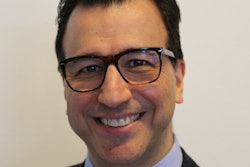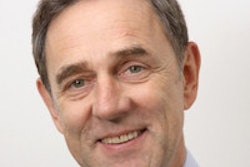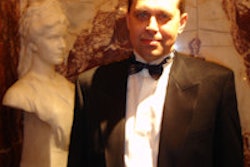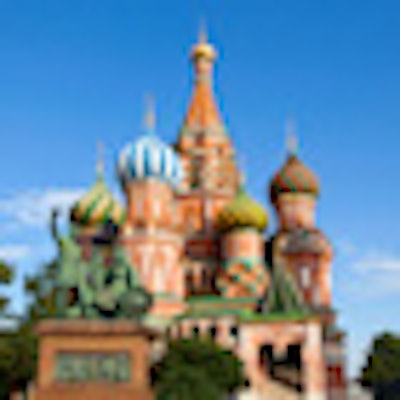
A meeting due to be held on Wednesday, 6 June, in Moscow will focus on the issue of postgraduate cardiology education and training -- and specifically the use of imaging techniques by cardiologists. To date, most imaging procedures in Russia have been uniquely in the remit of radiologists.
The meeting at the Russian Cardiology Center will discuss changes necessary to the existing system for cardiologists to become officially licensed to undertake cardiac ultrasound after dedicated training. Cardiologists envisage that with time, the training will be diversified so as to result in licenses for reviewing images from different modalities.
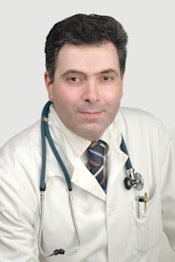 Reviewing cardiac images needs to be a key part of a Russian cardiologist's training, according to Dr. Simon Matskeplishvili.
Reviewing cardiac images needs to be a key part of a Russian cardiologist's training, according to Dr. Simon Matskeplishvili.
"Ultrasound stress testing, MRI, CT, and PET will hopefully be included in a cardiologist's training so that they will be able to read the images and decide what treatment is needed," said Dr. Simon Matskeplishvili, PhD, professor of cardiology and chief scientific and clinical researcher at the Bakoulev Scientific Center for Cardiovascular Surgery in Moscow. Matskeplishvili is well-known in his own country partly because he is a survivor of 9/11, having escaped from the Twin Towers.
After this week's Moscow meeting, a pilot project is slated whereby cardiologists will receive ultrasound training, before such training is extended to include CT and MRI. Turf battles may arise, he acknowledged, and this is an issue that will require close collaboration so that radiology colleagues don't feel relegated to a minor role in cardiovascular imaging.
"Without imaging today, there would be no cardiology or cardiac surgery," he emphasized. "The radiologist will rightly be against taking a back seat and will still need to perform CT or MRI exams, but cardiologists must be able to understand the results. One way might be for images to be analyzed by both specialists together."
A further two-week echocardiography school is planned for 56 cardiologists to learn about cardiac ultrasound through lessons on how to hold an ultrasound probe to performing 3D ultrasound and contrast stress tests, according to Matskeplishvili, who is also head of the Section of Echocardiography within the Russian Society of Cardiology.
"As yet, a cardiologist can't be licensed to perform echocardiography as it normally takes two years of training. We want to establish a four-month training course for cardiologists to become licensed, and hopefully this will be one of the issues discussed this week," he noted.
Being a Russian cardiologist involved in imaging, Matskeplishvili is an exception to the rule: Cardiologists in Russia generally don't perform studies or review images. Instead, separate cardiovascular diagnostic imaging specialists, so-called functional and ultrasound diagnosis doctors, undertake cardiac imaging and other procedures such as stress testing and ECG interpretation before writing the reports that the cardiologist then has to understand.
However, in the clinico-diagnostic department of the Bakoulev Center where Matskeplishvili works, cardiologists perform ultrasound and also review MRI, CT, and angiography images.
"We don't rely on the radiologists' reports, which are too general, but review the images and diagnose the problem ourselves. We are best placed to do this because we know the patients," he said.
The Bakoulev Center, which belongs to the Russian Academy of Medical Sciences, performs many image-controlled cardiovascular surgical (CVS) techniques. One is transcutaneous aortic valve replacement (implantation), in which a prosthetic valve is placed under ultrasound guidance in the aortic valve position for cases of severe aortic stenosis in inoperable patients, a procedure that also requires a preoperative CT.
"The indications for this less invasive procedure will increase dramatically over the next three to four years, in line with an increase in the number of patients for whom conventional surgery is not an option due to comorbidities or possible complications," he explained.
Compared with Russia, other countries have wider experience of such interventions, according to Matskeplishvili. Moreover, in France, for example, interventional cardiologists perform this type of procedure, while in Russia it is performed by interventional radiologists known as Roentgen vascular surgeons. However, he makes a case for such interventions to be carried out by cardiologists.
"Any image-guided cardiac intervention, whether under ultrasound or fluoroscopy, should be done by a cardiologist trained in the technique rather than by a radiologist," he said. "Specifically, percutaneous coronary interventions should only be undertaken by an interventional cardiologist, not as they are today by a radiologist, who is only treating the image, not the patient behind it," he added.
Latest advances in cardiovascular surgery such as cardiac resynchronization therapy (CRT) in severe heart failure patients have in recent years greatly improved patients' prognoses and quality of life.
At the Bakoulev Center, it is cardiologists, not ultrasound specialists, who perform echo techniques to determine the extent of dyssynchrony between the left and right ventricles, as well as that within the left ventricle. The results of such techniques are a good predictor of whether the procedure will be effective or not, and constitute a prime means of patient selection for CRT.
Another key area of research at the center is the likelihood of post-transplant patients rejecting their "new" hearts. Biopsy of the right ventricle post-transplantation is the standard method of testing for possible signs of rejection. However, at the Bakoulev Center, biopsy is frequently substituted for less invasive serial ultrasound exams.
"Minor changes can be seen with tissue Doppler and speckle tracking imaging techniques, which obviates going back into the heart and the risk of infection and other potential complications. In addition, the ultrasound exams are very accurate because we can see the whole heart and can calculate the parameters for every segment rather than rely on one small part of the tissue in a few random areas," Matskeplishvili said.
The Bakoulev Center aims to continue its 2009-initiated trial in serial ultrasound to detect rejection and, given the wide availability of this modality, establish a global project with the European Association of Echocardiography to reduce myocardial biopsies. So far, the trial shows promising results and a joint protocol has been discussed with other centers in Moscow.
Russia can be proud of its track record in pediatric cardiac surgery and arrhythmology, according to Matskeplishvili. However, Russia falls behind in mitral valve disease, where 80% of valves are replaced instead of repaired, unlike in the U.S. and Western Europe, where the majority of valves are repaired.
"We need good imaging techniques such as CT, MRI, and 3D echo to predict the possibility of repair," he said. He also pointed to Russia's lack of CT systems posing a challenge to surgeons who, when undertaking CRT procedures, need to know vein anatomy through contrast CT in order to place the electrode in the area of maximal dyssynchrony, instead of the more easily accessed left ventricle lateral vein.
Radiologists and heart surgeons cooperate, but to become better partners, the two specialties need to speak the same language after training in each partner's discipline, according to Matskeplishvili.
He is optimistic about CVS in Russia, particularly given increasing interest from the government in this field.
"A high mortality in Russia due to CV disease has highlighted the need for training and improvement in this area, including better job prospects and equipment. In addition, there are signs that doctors who relocated for better prospects are returning to Russia," he commented.
Editor's note: For a video interview about Matskeplishvili's experiences on 9/11, click here.





